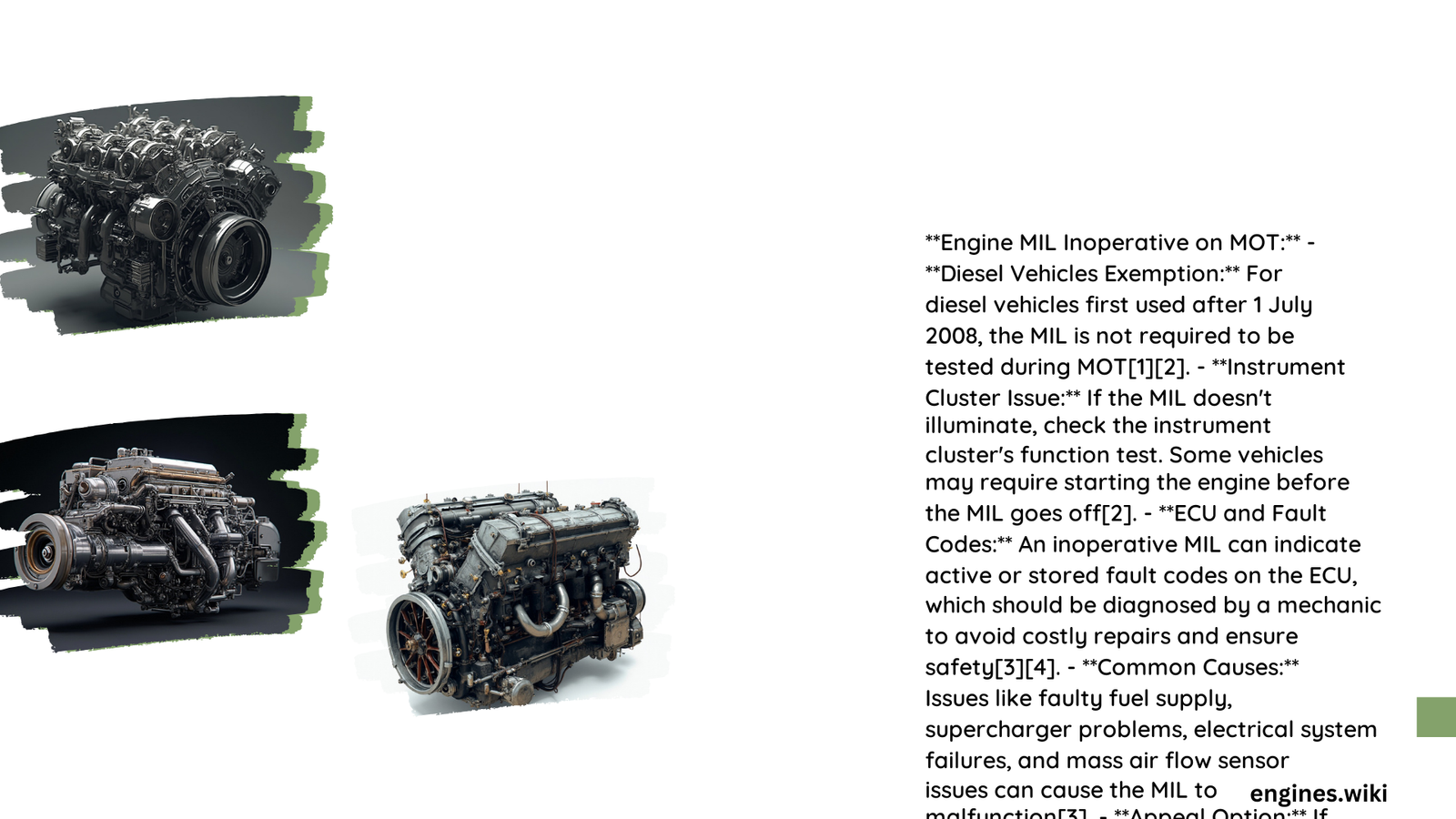When a vehicle’s Malfunction Indicator Light (MIL) fails to function during MOT testing, it can signal complex electrical or systemic issues within the vehicle’s engine management system. Modern vehicles rely on this critical warning mechanism to communicate potential problems, and its inoperative status during inspection can lead to immediate test failure. Understanding the diagnostic process, potential causes, and resolution strategies becomes paramount for vehicle owners and technicians seeking to address this technical challenge efficiently.
What Causes Engine MIL Inoperative During MOT?
Why Does MIL Functionality Matter?
The Malfunction Indicator Light (MIL) serves as a crucial communication interface between a vehicle’s electronic control unit (ECU) and the driver. During MOT testing, its proper operation indicates the vehicle’s overall electronic health and potential diagnostic readiness.
What Are Common Electrical System Failures?
- Wiring Complications
- Corroded electrical connections
- Damaged wire harnesses
- Intermittent electrical shorts
-
Degraded insulation materials
-
Component-Specific Issues
- Faulty ECU sensors
- Defective MIL bulb/LED
- Compromised ground connections
- Voltage regulation problems
How to Diagnose MIL Inoperative Problems?
Diagnostic Tool Requirements
| Tool | Purpose | Estimated Cost |
|---|---|---|
| OBD2 Scanner | Code Reading | £50 – £200 |
| Multimeter | Electrical Testing | £20 – £100 |
| Diagnostic Software | Advanced Analysis | £100 – £500 |
Step-by-Step Diagnostic Procedure
- Initial Verification
- Confirm ignition switch functionality
- Check MIL bulb integrity
-
Verify ECU power supply
-
Electrical System Inspection
- Measure voltage across MIL circuit
- Test wire continuity
- Inspect ground connections
- Evaluate sensor performance
What Technical Specifications Impact MIL Operation?
Voltage and Resistance Parameters
- Standard Voltage Range: 11.5V – 14.5V
- Typical Resistance: 120-180 ohms
- Ground Connection Resistance: < 1 ohm
- Acceptable Voltage Drop: < 0.5V
What Professional Recommendations Exist?
- Preventative Maintenance
- Regular electrical system checks
- Annual sensor calibration
-
Comprehensive ECU diagnostics
-
Professional Assessment
- Utilize specialized automotive diagnostic centers
- Consider manufacturer-specific diagnostic protocols
- Implement systematic troubleshooting approach
How Much Will Repairs Cost?
Repair costs vary significantly based on the underlying issue:
– Minor electrical repairs: £50 – £250
– Sensor replacements: £100 – £400
– Complete ECU replacement: £500 – £1,500
What Are Potential Long-Term Consequences?
Ignoring MIL inoperative issues can lead to:
– Undetected vehicle performance problems
– Potential MOT test failure
– Increased risk of unexpected mechanical failures
– Potential voiding of vehicle warranty
Expert Recommendations

Vehicle owners should:
– Address MIL issues promptly
– Maintain comprehensive service records
– Work with certified automotive technicians
– Utilize professional diagnostic services
Final Technical Insights
The engine MIL represents a sophisticated diagnostic tool requiring meticulous attention. Successful resolution demands a systematic, technology-driven approach combining electrical expertise, diagnostic precision, and comprehensive vehicle understanding.
